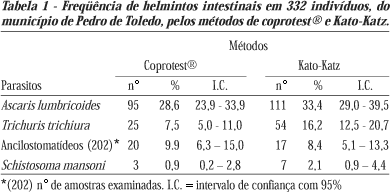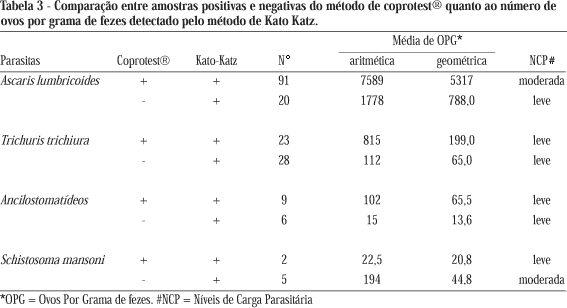Parasitological diagnosis should be appropriately conducted with high sensitivity and specificity so that intestinal parasite can be detected as the specific treatment depends on this result. A comparative study was developed to evaluate the concordance between the Kato-Katz and coprotest® methods in the detection of helminthes in 332 individuals in Pedro de Toledo. A significant difference was found in the case of the Trichuris trichiura - 16.2% with the Kato-Katz method and 7.5% with the coprotest® method. Therefore, the positive and negative samples of the coprotest® method were compared with the number of eggs per gram of feces (epg) obtained by the Kato-Katz method. When the coprotest® method was negative, 65 epg of Trichuris trichiura were found by the Kato-Katz method and when the coprotest® was positive the epg according to the Kato-Katz were far higher, 199 epg, which demonstrated that the coprotest® was inferior to the Kato-Katz method regarding low intensity infections.
Intestinal parasites; Diagnosis; Parasitological techniques



